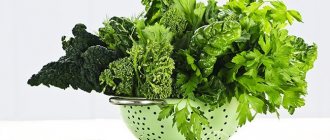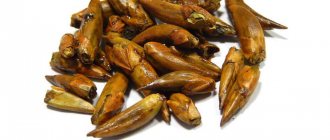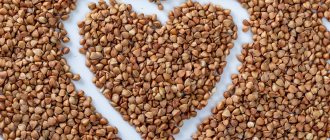There is no unambiguous attitude towards eating offal. For gourmets and connoisseurs of fine and delicious dishes, offal is a real culinary delicacy. Most people consider them to be second-rate food and include only certain types in their diet, for example, liver and heart. Pork kidneys are a rarely used product. Although in fact, kidneys are very useful. You can prepare delicious dishes from them. Pork kidneys are especially tender in taste when cooked correctly.
Useful properties of the product
Pig kidneys are a low-calorie by-product (100 kcal per 100 g), containing vitamins, macro- and microelements that are vital for humans. The universal combination of their constituent chemicals, when used regularly, increases immunity and improves hematopoietic function.
The nutritional value:
- Fats - 3.25 g;
- Proteins - 16.46 g;
- Carbohydrates - 0.00 g;
- Water - 80.06 g.
100 g of pork kidneys contain 22% of the daily protein requirement.
To burn calories from eating 100 g of pork kidneys, you need to dance for 25 minutes, run for 8 minutes or sleep for 1 hour and 35 minutes.
The vitamins that make up pork kidneys are represented by fat-soluble (vitamin A) and water-soluble (C, B1, B2, B3 (PP), B5, B6, B9 and B12) groups. 100 g of product contains 353.8% of the daily value of vitamin B12, which helps the development of red blood cells, and 130.5% of the daily value of vitamin B2, which has a positive effect on visual acuity and protects the nervous system from constant stress.
The mineral composition of the product includes alkaline earth metals (Ca, Mg), alkali metals (K, Na, Fe, Zn, Cu, Mn) and minerals (P, Se). The largest percentage of the daily intake in the kidneys is copper (69%), iron (49%) and selenium (345.5%).
The by-product contains 18 amino acids. Of these, leucine (1.477 g per 100 g of product), isoleucine (0.879 g) and valine (0.948 g) are isolated. They are essential amino acids.
Kidneys are a useful product for athletes. Of the three amino acids included in their composition (glycine (1.043 g), arginine (1.011 g) and methionine (0.353 g)), the body independently synthesizes creatine. This is an essential substance for bodybuilders and powerlifters.
The product has no flaws. It is useful to include it in the diet of people who have problems with the circulatory and excretory systems, suffer from thrombophlebitis, and are on a diet. It is not recommended to include it in the menu for children under two years of age.
The occurrence of allergic reactions is observed only in cases of individual intolerance to the product.
From all of the above, we can conclude that kidneys should be included in the diet to boost immunity and improve the functioning of the cardiovascular and digestive systems.
Method for removing odors and tastes from game meat (hare)
I want to introduce you to another way to get rid of a specific odor from a product. In our Kalmyk steppes, where I now live, there is the opportunity to hunt various game. Naturally, within the framework of the law.
I am familiar with hunting firsthand. I went duck and hare hunting. Don't laugh, duck and goose hunting opens sometime in October. The only difference is in numbers. Sitting in ambush by the river and waiting for a flock of ducks to splash down on the river surface is a tiring task. I did not like.
It was impossible to sit without moving, and movements caused a furious hiss from my partner. Apparently the ducks heard the fuss and did not want to rest nearby, but flew further away. In this case, it was difficult to get close to them silently.
Another thing is hunting hares! The technology consisted of simply moving on a motorcycle in the dark, namely, until 12 at night, to the places where the hare was supposed to camp. As soon as the headlights caught a gray long-eared creature from the darkness, you had to rush after it, without letting it out of this beam. My partner was shooting from the motorcycle cradle.
Hare dishes are very tasty, the method of soaking a hare carcass is tedious and personally unpleasant for me. Constantly drain and change the water. And the effect is not always one hundred percent. I also discovered a way to get rid of the smell of game by accident.
Every year on January 2, former farmers come to hunt. As they say, hunting is worse than captivity. After their hunting trips, a childhood friend brought a couple of bunnies. I even learned how to remove the skin. Once again they brought in hare meat, and I complained that I was tired of soaking it. I almost gave up bunnies.
This is the method suggested by experienced hunters. It turns out there is no problem!
How to choose the right product?
Kidneys belong to the by-products of the first category. Outwardly, they resemble beans. The kidneys of one pig weigh no more than 150 grams. They have a smooth and even surface. The color of a quality product is light brown or brown. The offal of a young pig is light in color, and the offal of an older animal is dark. Those buds that have been lying on the counter for more than a day also darken.
Sometimes, when examining the surface of the product, you may notice green or yellow spots. They are formed as a result of a careless puncture of the spleen and gall bladder when cutting a carcass, but do not in any way affect the quality of the kidneys.
Important! The presence of cuts, cracks, tears and dark spots indicates low quality of the product.
The kidneys are an organ that cleanses the animal’s body of toxic and harmful substances. When purchasing a product on the market, you should pay attention to the quality of the animal’s meat and ask what kind of food the pig ate. Kidneys and meat from unscrupulous suppliers may contain toxic substances.
Products sold in stores and supermarkets are tested for toxicity.
What is it used for?
If pork kidneys are cooked for a dog, the requirements are not as stringent as for human food. Still, an animal is an animal, its stomach is significantly less picky about the quality of food. Therefore it is enough:
- wash the kidneys in water;
- cut each into two equal parts;
- boil and drain the water;
- Boil for 20 minutes over medium heat.
When calculating the amount of product for cooking, it is necessary to take into account that boiled pork kidneys become approximately 50% smaller. After cooking, they can be used in salads, for hodgepodge, as a component of a complex side dish. This by-product is also used in the preparation of stews, pickles, and kebabs. But in order to prepare pork kidneys for use in such dishes, they must be soaked in water; this should not be forgotten. To make soaking more effective, add salt to the water.
Repeated boiling allows you to slightly reduce the time spent on processing the kidneys. However, they will still need to be kept in cold water for at least 2 hours.
What does cooking pork kidneys look like in a real recipe? Some possible options include:
- 500 g of kidneys;
- 250 g milk;
- 150 g table vinegar;
- 250 g of meat or mushroom broth;
- 60 g olive or sunflower oil.
In addition to these components, there are also those that are added to taste: salt, green vegetables, bay leaf, peppercorns. Preparation begins by cutting all the kidneys in half. Be sure to remove any films, tendons and ducts. Next, the meat is thoroughly washed under running tap water. The by-products are poured with milk, ensuring that they are completely covered with a layer of liquid.
Soaking Pork Kidneys
The main reason why such a useful and inexpensive product is not popular on the home table is hidden in its smell. Indeed, fresh buds smell like urine, and this smell is quite unpleasant. In addition, when cooking them, there will also be an ammonia stench in the kitchen, so it is better to open a window or turn on the hood. Also, for preliminary preparation of the product (soaking and boiling), it is recommended to use separate dishes, for example, a pan in which eggs are painted for Easter.
Before soaking, the product should be washed, freed from the fat capsule, films, ureters, capillaries removed, and a cut made in the middle.
Using a sharp knife, you can make a fine mesh on the surface of the product, then odors will be removed even faster.
There are many effective methods for soaking buds, let’s look at the main ones.
Boiling:
- Clean the product and soak in cold water for 2-12 hours depending on the age of the animal.
- Place the product in a saucepan, add cold water and put on high gas, bringing to a boil.
- Drain the water, rinse the offal, add water again and boil again until clean water is formed. If after the second time the water remains dirty, the procedure should be repeated. You can add lemon to the water.
Using Vinegar:
- Prepare the product.
- Pour 1.5-2 cups of vinegar into a kitchen container and add 30 g of salt.
- Rinse the product thoroughly in the prepared solution.
- After the liquid acquires a dark color, place a stream of cold water in the container with the offal.
- Rinse for 20 minutes.
Soaking in milk:
- Pour cleaned and washed offal with warm milk.
- After three hours, pour out the milk and rinse the product with cold water.
Step-by-step cooking recipe
If there are films on the kidneys, they need to be removed. I had beef kidneys already peeled from the film.
Carefully cut out all fat and remove ducts. I find it easier to do this with kitchen scissors.
Turn the kidneys over, smooth side up. Using a sharp knife, cut the surface diagonally, then turn the board and cut in a perpendicular direction. The surface will look like a “checkered pattern”.
Now you need to cut the kidneys into pieces of the usual size for cooking. Place the pieces in a bowl and sprinkle generously with baking soda. Stir until they are coated with powder on all sides. Leave for 20 minutes.
After 20 minutes, rinse the pieces thoroughly with cold water, sprinkle with salt and add vinegar. It is better to take wine or rice, but you can also use regular alcohol. Stir and, not paying attention to the indignant hissing and abundant foam, leave everything for about an hour. If you are absolutely sure that the kidneys came from a young animal, you can reduce the time in vinegar to half an hour.
In conclusion, rinse thoroughly again, dry and that’s it, you can cook.
Complete collection and description: how to soak the buds so that there is no smell? and other information for human treatment.
Kidneys are classified as offal, but unlike liver, tongue or heart, they are used much less frequently in home cooking. And in vain, because the kidneys contain a large amount of B vitamins and other microelements. However, many people do not like this type of offal because of the specific smell that is present even after heat treatment of the kidneys. But experienced housewives know that the kidneys need to be soaked for a long time before cooking so that the unpleasant odor disappears. To soak pork or beef kidneys and prepare them for further processing, in addition to the kidneys themselves, you will need baking soda, milk or water.
Delicious recipe! Fried potatoes with sausage in a slow cooker
How to soak buds correctly
To prepare culinary dishes, it is still better to use the kidneys of young animals - they are easier and faster to prepare. In addition, the kidneys of a young animal contain much less harmful substances. Beef or pork kidneys are located in special capsules, so before soaking they need to be emptied and all tubes, films, ureters and fat removed. After this, you can begin to treat the kidneys.
Rinse the cleaned kidneys thoroughly in running water. After that, transfer them to a deep saucepan and fill with water. Soak the buds for at least four hours, changing the water every hour. Many housewives prefer to use milk instead of water, because it cleanses well and removes harmful substances, and the product itself becomes softer. Milk for soaking the kidneys should only be used warm, and it should also be mashed every hour.
If you don’t have time to soak the buds for a long time, you can get rid of the unpleasant odor using baking soda. To do this, make deep cuts on the kidneys and pour soda into them. After 1-1.5, rinse the kidneys in running water.
How long to soak the kidneys
It is difficult to say how long you need to soak the buds to completely get rid of the smell. It all depends on the age, feeding, health of the animal whose kidneys you are planning to cook, and finally, on the weight and volume of the kidneys themselves. In this situation, the principle rather applies - the longer, the better. In any case, soaking in water or milk should be carried out for at least four hours. And if possible, after several changes of milk or water, leave the kidneys overnight.
You can also soak the kidneys in cold water for 12 hours without changing the water. After soaking for a long time, rinse the kidneys thoroughly, add a fresh portion of cold water and bring to a boil. Then drain the water and refill with clean water. Bring to a boil again. Do this procedure 5-6 times until the water becomes completely clear.
Before soaking, it is better to cut the buds in several places or cut them into several pieces so that they can be washed better. However, it is not necessary to soak the kidneys at all. Some housewives simply boil them in three waters for 30 minutes. Much less time is spent on processing the buds, but in the end the same effect is obtained as after soaking.
We also recommend watching
Before cooking the kidneys, they must be soaked. Remove the fat from the raw buds and cut them in half lengthwise, then put them in cold water for 8 hours to soak and get rid of the ammonia smell. Change the water every 2 hours. Remove ureters, membranes and large blood vessels and rinse the kidneys again in clean cold water.
Pork kidneys can be processed differently. Sprinkle the kidney cut lengthwise with baking soda on both sides and leave for half an hour, then rinse in running cold water and clean from films, ureters and blood vessels. After such preparation, the kidneys acquire a pleasant, unique aroma, and dishes made from them become tender and juicy.
- kidneys – 0.5 kg
- butter or ghee – 50 g
- lemon – ½ pc.
- fresh tomatoes – 0.5 kg
- salt
- pepper
- greenery
Cut the prepared kidneys crosswise into small slices 3–4 mm thick, add salt and pepper and immediately begin frying in hot oil on both sides. The kidneys are ready when the redness on the incision disappears. These by-products should not be fried for too long; they become tough and dry.
Cut the tomatoes into slices and fry on both sides. When serving, place the kidneys on a plate, sprinkle with lemon juice and sprinkle with herbs. Place a tomato slice on each kidney slice and garnish with fried potatoes.
- kidneys – 0.5 kg
- butter or ghee – 50 g
- salt
- pepper
- greenery
- sour cream – 300 g
- wheat flour - level tablespoon
- butter – 50 g
- salt
- ground pepper
- onion – 1 head
Mix flour with half the softened but not melted butter. Bring the sour cream to a boil and add the flour and butter mixture piece by piece, stirring constantly. Cook over low heat for 5-7 minutes, then add salt and pepper to the sauce.
Finely chop the onion and saute in the remaining oil until soft, transfer to hot sour cream sauce and boil again.
Cut the kidneys into small slices, add salt and pepper and fry in hot oil on both sides. Pour sour cream sauce over the finished kidneys and boil for 2-3 minutes.
- kidneys – 0.5 kg
- carrots – 2 pcs.
- onions – 2 heads
- turnip – 1 small root vegetable
- pickled cucumbers – 2 pcs.
- salt
- pepper
- butter – 50 g
- wheat flour – 1 tablespoon without top
- meat broth – 400 ml
- carrots – 1 pc.
- onion – 1 head
- parsley root – 1 pc.
- celery root – 1 pc.
- sugar – 1 teaspoon
- tomato sauce – 2 tablespoons
- salt
- ground pepper
- bay leaf – 2 pcs.
Sauté the flour in half the butter, transfer to the hot broth and bring to a boil. Sauté thinly sliced vegetables in vegetable oil and add to the broth with flour. Add herbs, roots, tomato sauce there and cook over low heat, stirring, for 45 minutes. Add salt, sugar, pepper, bay leaf to the broth and cook for another 15 minutes. Then rub the sauce through a sieve, bring it to a boil and season with the remaining butter.
Cut the prepared kidneys into pieces 5-6 mm thick, add salt, fry on both sides and pour sauce over them.
Cut vegetables and herbs into small pieces and lightly fry in heated sunflower oil. Cut small pickled cucumbers into thin slices. Place all the vegetables in a bowl with the kidneys, stir and simmer under the lid over low heat until the vegetables are fully cooked.
Delicious recipe! Actors of the film Surprise House
Dishes made from pork kidneys are not particularly popular in our area, although in other cuisines of the world they are considered almost a delicacy. The reason for this is ignorance of how to cook odorless pork kidneys and avoid a “rubbery” consistency.
According to the recipes of our grandmothers, we soak this offal for a long time (which, in fact, is correct if the pig that gave it was old, or the kidneys themselves are not very fresh) and cook for hours. But it is the prolonged thermal effect that has such a detrimental effect on the delicate structure and makes the dish practically inedible . Therefore, below we will give some tips on how to properly prepare pork kidneys to create a real culinary delight.
Prolonged soaking of buds
Many housewives and people with a keen sense of smell try to achieve a complete absence of unpleasant odor in the product. For them, a long soaking procedure is suitable, which requires a lot of time, but gives an excellent effect.
First option:
- Clean the offal.
- Rinse under the tap.
- Pour in water or warm milk (optional).
- Soak for four hours, changing water or milk every hour.
Second option:
- Prepare the offal.
- Fill with cold water.
- Leave for 12 hours.
- Do not change the water.
- For further processing, use the boiling method described above.
Additional recommendations
As can be seen from the description, preparing pork kidneys for cooking takes quite a long time. But you can’t do without this, including the gradual draining of water. Otherwise, harmful substances from the offal, associated with its specific natural function, will not go away and it will not be possible to cook the kidneys without smell. Some help to reduce time costs:
- cutting into pieces;
- removal of all veins and ducts;
- Thorough rinsing for the first time.
If it seems that it is difficult and time-consuming to cook pork kidneys correctly using the specified technology, there is another way to simplify the work. The chopped, washed pieces are rolled in baking soda. And they don’t just roll it in, but leave it for 20 minutes. After this, rinse thoroughly with clean water to remove all the soda. Now you can cook the offal: in this case, do not change the water, keep the pan on the fire for 40 minutes.
There is another method for boiling pork kidneys. There is such a recommendation: the product is soaked in milk. But still, during the cooking process, the water is changed several times. Unlike soda, milk does not absorb and suppress harmful substances well enough. But if the kidneys were soaked in milk or cream, the finished product will be very soft and pleasant in consistency.
A quick method to get rid of odor
You need to use baking soda and vinegar. Let's consider a step-by-step algorithm of actions:
- Wash the by-product, clean it, cut it in half, add baking soda in the proportion of 0.5 tsp per 100 grams of product. soda Leave to react for 30 minutes to an hour depending on the age of the animal. The baking soda will begin to foam, eliminating the pungent odor.
- Next, wash the soda, divide the kidney halves into 3 parts and soak for half an hour in a solution of vinegar and water (a glass of vinegar per 2 liters of water).
- Boil the offal for 3-5 minutes in a saucepan, immersing it in cold water and bringing to a boil.
The benefits of kidneys and their use in cooking
Pork and beef kidneys are valued for their high content of vitamins and microelements. In addition, doctors and nutritionists advise using them for the following reasons:
- low calorie content - only 87 kcal per 100 grams of product (they can be eaten by overweight people and those on a diet);
- a large amount of iron, which is involved in the process of hematopoiesis and is useful for people with anemia;
- high selenium content, which has a beneficial effect on the thyroid gland;
- the presence of vitamins A, B, PP, which strengthen the immune system;
- the presence of calcium, potassium, phosphorus, which have a general strengthening effect on the body.
Despite the fact that at first glance, by-products may seem unattractive, they can be used to prepare very tasty dishes, such as rassolnik or mixed meat solyanka. In addition, kidneys are prepared in the following variations:
- in mustard and jam sauce;
- in wine sauce with dried apricots;
- French;
- stewed with vegetables;
- with apples;
- in Uyghur;
- with buckwheat;
- with pumpkin soy sauce.
Kidneys are served as first and second courses, side dishes, and are included in some sauces.
Pork, beef and lamb kidneys are an amazing delicacy, but in order to cook them tasty and healthy, you need to properly soak the offal. Then new dishes will appear on the table, seasoned with a variety of sauces, spices and side dishes.
Features of cooking kidneys in a slow cooker
In a slow cooker, cook pork kidneys using the “Stew” mode for 30 minutes.
Cooking process:
- Prepare the offal, clean, soak, cut into small pieces.
- Stew onions, carrots, tomato paste.
- Place the offal in the multicooker bowl, cover with vegetable dressing, add spices.
- Simmer until done.
Pork kidneys can be cooked in the microwave, oven, or in pots. The main thing is to buy a high-quality offal and soak it properly to get rid of the unpleasant odor.
Rassolnik with kidneys
A classic version of the popular Russian soup, rassolnik, with rice and pork kidneys.
We take:
- By-product – 3 pcs.
- Rice – ½ cup.
- Potatoes - 3 tubers.
- Carrots, onions – 1 pc.
- Cucumber pickle - glass.
- Pickled cucumber – 2 pcs.
- Seasonings for pork, salt, pepper, oil, fresh herbs.
- Water – 2.5 liters.
Preparation:
- Peel the vegetables. Cut the potatoes into small cubes. Chop the potatoes larger.
- Fry onions and carrots. When they are sufficiently browned, add the cucumbers. Simmer over low heat until soft.
- Soak, then boil the kidneys in three waters. Cut into pieces. Fill with clean water and cook for the fourth time. Cook for about half an hour.
- Add chopped potatoes and rice washed in several waters. Continue cooking for another 10-15 minutes.
- Place the roasted vegetables into the pan. Pour in the brine (do not pour it all at once, taste and add a little).
- Season the pickle with seasonings and simmer for a few more minutes. The finished soup must steep for at least a quarter of an hour.











